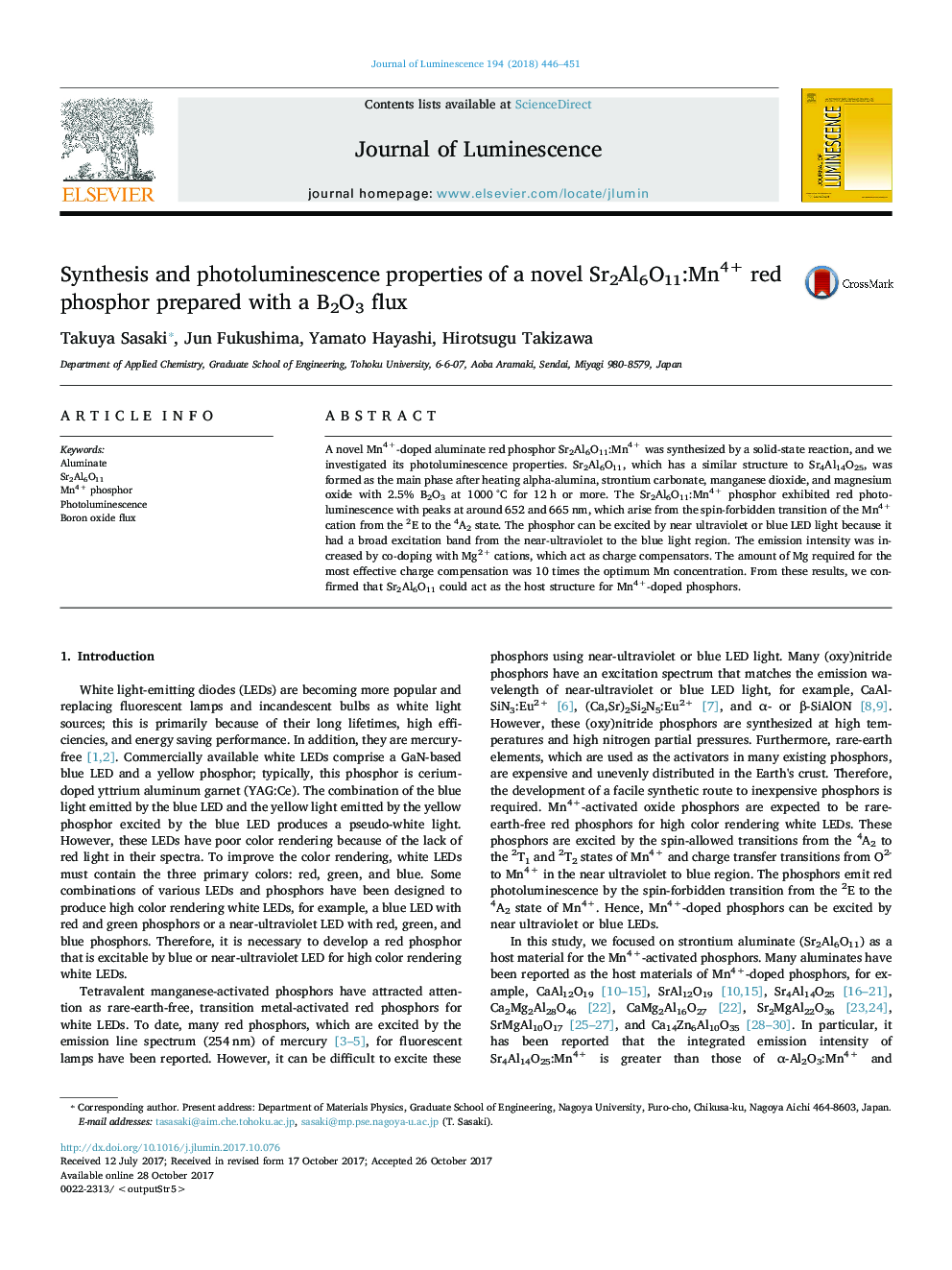| Article ID | Journal | Published Year | Pages | File Type |
|---|---|---|---|---|
| 7840702 | Journal of Luminescence | 2018 | 6 Pages |
Abstract
A novel Mn4+-doped aluminate red phosphor Sr2Al6O11:Mn4+ was synthesized by a solid-state reaction, and we investigated its photoluminescence properties. Sr2Al6O11, which has a similar structure to Sr4Al14O25, was formed as the main phase after heating alpha-alumina, strontium carbonate, manganese dioxide, and magnesium oxide with 2.5% B2O3 at 1000 °C for 12 h or more. The Sr2Al6O11:Mn4+ phosphor exhibited red photoluminescence with peaks at around 652 and 665 nm, which arise from the spin-forbidden transition of the Mn4+ cation from the 2E to the 4A2 state. The phosphor can be excited by near ultraviolet or blue LED light because it had a broad excitation band from the near-ultraviolet to the blue light region. The emission intensity was increased by co-doping with Mg2+ cations, which act as charge compensators. The amount of Mg required for the most effective charge compensation was 10 times the optimum Mn concentration. From these results, we confirmed that Sr2Al6O11 could act as the host structure for Mn4+-doped phosphors.
Keywords
Related Topics
Physical Sciences and Engineering
Chemistry
Physical and Theoretical Chemistry
Authors
Takuya Sasaki, Jun Fukushima, Yamato Hayashi, Hirotsugu Takizawa,
